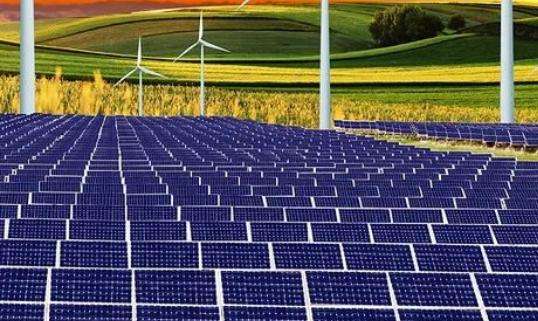The atmospheric temperature you mentioned should refer to the ambient temperature, but the cooling temperature limit of the cooling tower is the wet bulb temperature. For example, in Guiyang, Guizhou, the highest temperature in summer is usually 40 degrees. But the maximum. the wet bulb temperature is only 2. If the temperature is above ten degrees, the cooling water can be reduced to more than 20 degrees. Of course, this doesn't violate the second law of thermodynamics. It's just that you confused room temperature and room temperature. wet bulb temperature. There is a problem with the answer above. Thermal power plants generally do not do this. When using closed cooling towers, the unpowered hyperbolic cooling tower is most commonly used.
Why do nuclear power plants use? sea water forr cooling water? Why can't thermal power plants use sea water?
Thermal energy The function of the power plant cooling tower is to provide cooling water to a certain temperature to the condenser to condense the sea water. discharge the steam from the low pressure cylinder of the steam turbine, so that the steam turbine can operate safely and economically under a certain exhaust steam pressure. The functions of cooling towers in thermal power plants are as follows:
The higher the cooling capacity of the cooling tower, the lower the temperature of the cooling water supplied to the condenser after circulating water passes through the cooling system. tower, and the lower the cooling water temperature, it will also improve the condenser vacuum, which ultimately reduces the levelu of coal consumption of the power plant and will improve the economic operation of the unit.
The choice of cooling tower is very important. There are many shapes of cooling towers and their structures are also very complex. According to the ventilation method, there are natural ventilation cooling towers and mechanical ventilation cooling towers according to the contact method between hot water and air, there are wet cooling towers (open type), dry (closed type) and dry-wet cooling towers; Types (mixed). Classified according to the flow direction of hot water and air, there are counter-flow cooling towers and cross-flow cooling towers.
Thermal power plants generally use moist natural ventilation cooling towers or moist mechanical ventilation cooling towers. The towerWet natural ventilation cooling is a cooling tower that uses wind or natural heat to generate airflow. Its advantages are simple structure, low operating cost and easy maintenance. Its disadvantages are large size, low efficiency and significant impact on the environment. Wet mechanical ventilation cooling tower is a cooling tower that uses fans to force airflow. Its advantages are small size, high efficiency and it is not affected by the environment. Its disadvantages are complex structure, high operating costs and high noise.
Sea water can also be used to cool water in thermal power plants, but sea water cannot be used for boiler steam. The thermal power plant has a dedicated workshop to purify the water quality, and it should be. monitoredRegularly during operation to avoid exceeding the standard, the main work of this profession is to replace, regenerate, soften and desalinate fresh water to meet the pure water quality requirements, and then deoxygenate it. During operation, chemicals must be added accordingly. settings to allow salts to solidify and precipitate in sewer pipes. Drain to purify the water. You know that the teapot used for watering at home scales after prolonged use because the quality of the water is too hard and contains too much salt if you use a boiler with an evaporation capacity of several hundreds or thousands of tons per hour. , the direct consequence will be the boiler. The pipes were blocked and the boiler was scrapped. If sea water is used as boiler water, the water treatment work will be more rigorous.
TheNuclear power plants use seawater to cool the water, mainly because most nuclear power plants are built by the sea, so it is more convenient to use seawater.
Of course, whether it is a nuclear power plant or a thermal power plant, when using seawater cooling water, attention must be paid to anti-corrosion problems. Sea water contains many electrolytes and has much stronger corrosion capabilities than fresh water.














